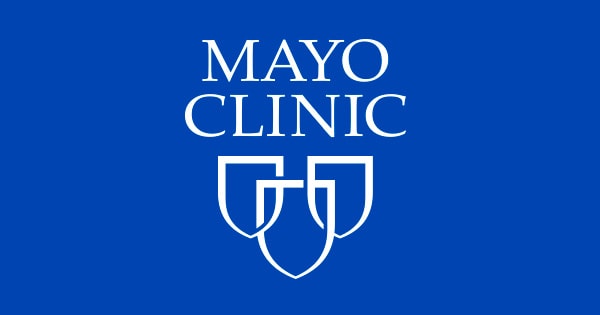In the latest Medicare Physician Fee Schedule, the U.S. Centers for Medicare and Medicaid Services proposed for the first time a set of CPT codes for remote therapeutic monitoring.
These codes, according to the proposal, are intended to be used to understand the effectiveness of and the patient’s response to a prescribed therapy. In particular, CMS specifies that these codes can be used to monitor medication adherence.
In the U.S., preventable hospitalizations and emergency department visits related to medication non-adherence cost more than $300 billion a year, according to National Institutes of Health research.
Therefore, the inclusion of medication adherence programs in CMS’ proposed RTM codes represent a major step forward in solving one of healthcare’s biggest challenges. These codes also represent one of the latest advancements to modernize reimbursement for digital health.
Over the last five years, CMS has opened opportunities to reimburse providers for non-traditional modes of patient interactions in which the patient is remote from the provider.
These efforts have been confusing due to the novelty of the technologies, as well as the unpredictability of utilization. Patients often pay copays for items billed to them, which has also limited the number of patients willing to participate.
Nevertheless, new categories of digital health reimbursement have become increasingly clear. The new RTM codes resemble those for remote physiological monitoring, which reimburses providers for the review of physiological data that is automatically transmitted from a device (for example, heart rate).
The key difference between RPM and the new RTM codes is that RTM codes can specifically be used to monitor medication adherence, and can include instances when the patient self-reports clinically relevant health information, such as symptoms or side effects. Other advancements in digital health reimbursement include those for virtual check-ins, where a provider reviews a photo or video submitted by a patient, and e-visits, in which a patient checks in to a provider via an online portal.
Healthcare IT News sat down with Sebastian Seiguer, CEO of emocha Health, a telehealth and remote patient monitoring company, to discuss these codes and their potential effects on healthcare.
Q. How will CMS’ proposed remote therapeutic monitoring codes enhance patients’ quality of care?
A. Medications do not work unless they are taken properly. Providers can leverage these codes to monitor and support patients’ medication adherence and response to those medications. With this information, providers will understand if a patient’s regimen needs to be adjusted or if other behavioral or social support is needed to help the patient be successful.
Monitoring medication adherence and therapeutic response can also be used to correct medication technique errors. For example, in a pilot study leveraging asynchronous video technology and human engagement for pediatric patients with asthma, adherence was high among patients who initiated the program and inhaler technique error rate decreased to clinically meaningful degree.
RTM can potentially offer more convenient ways for patients to engage with health systems. According to the recent 2020 Digital Health Care Survey, U.S. consumers want virtual care services. In fact, 62% of those surveyed say they would receive health and wellness advisories.
Additionally, more than half would opt for remote monitoring of ongoing health issues through at-home devices (57%) or would choose virtual for routine appointments (52%). Thus, the availability of reimbursement codes for RTM incentivizes providers to offer care in a way that aligns with patients’ preferences.
The available reimbursement codes for virtual care – and the new Remote Therapeutic Monitoring codes by extension – support efforts to provide the right care to the right patient at the right time and place. Using these codes creates convenience that traditional, in-person visits do not necessarily allow.
In-person care is certainly an important aspect of patients’ treatment plans, but it no longer needs to be the only modality. Extending beyond the walls of a hospital or clinic also enables providers to continue to support patients in ways that were not previously possible and recognize the complex and non-traditional schedules many individuals live with.
Q. Why is it critical that federal policymakers take specific actions to encourage health service expansion and make telehealth platforms a more permanent fixture?
A. It’s important that the federal government set policies that align incentives with the outcomes we hope to see for patients: higher quality care at lower overall costs. The inclusion of these codes in the proposed fee schedule – in addition to digital health reimbursement codes introduced over the past few years – is evidence that payment policies are beginning to catch up with consumer demand and advancements in technology.
It’s encouraging that CMS, along with the American Medical Association’s CPT Committee (and its Digital Medicine Payment Advisory Group), continue to put forth reimbursement mechanisms that support the increased utilization of digital health and telehealth services.
At the same time it is worth noting that while these codes create reimbursement for using modern technologies, they are part of “fee for service” healthcare as opposed to “value-based care.” While it is encouraging to see CMS embrace new models of care, the issue with fee-for-service is that it provides incentives to bill patients, and can detract from an approach in which institutional and individual providers accept risk for delivering improved patient outcomes.
In this case, CMS expects that successful RTM initiatives will result in the lowering of spending on preventable hospitalizations, ED visits and urgent care.
As it relates to the proposed 2022 Physician Fee Schedule and the new RTM codes, there are a few specific actions that CMS can take in order to strengthen and clarify the codes as well as encourage adoption.
The code set as proposed has known uncertainties. Primarily, it is not clear who can do the work required to bill the codes. It’s important that CMS considers comments submitted by several stakeholders offering recommendations that would enable remotely supervised clinical staff to perform RTM services for the billing provider (known as incident-to billing).
RTM codes should not be limited such that only physicians or qualified health professionals can perform these services, otherwise adoption may be low.
It’s also important that RTM reimbursement should be expanded to include devices or software-as-a-medical-device (SaMD) for any condition, not just for musculoskeletal and respiratory conditions that are currently included in the proposal.
Finally, as it relates to medication adherence, CMS should ensure that this is monitored through a validated mechanism, such as electronic Directly Observed Therapy, or eDOT.
eDOT is a World Health Organization-endorsed and U.S. Centers for Disease Control and Prevention- validated model through which caregivers, providers or community health workers hold a daily virtual appointment with a patient to observe the patient taking each dose of their prescribed medication, resolve regimen-related issues that arise such as side effects, reinforce proper administration of medications, and otherwise monitor the patient’s condition(s) throughout treatment.
Q. What does RTM mean for the progress of healthcare in the digital space, and the future of telehealth?
A. While digital health and telehealth solutions have existed for some time, the ongoing COVID-19 pandemic infused a sense of urgency in the modernization of payment models for virtual care. The inclusion of RTM codes in the 2022 Physician Fee Schedule suggests that transformations in digital health policy initiated in response to COVID-19 are beginning to have some permanence.
The RTM codes also show that CMS recognizes that “therapeutic” data – not just “physiologic” data – is an important category of patient information that can be assessed remotely.
Therapeutic data, according to CMS’ proposal, includes pain levels and medication adherence recorded or reported by the patient through a medical device. Monitoring and improving medication adherence is one of lowest hanging fruit in all of healthcare when it comes to improving patient outcomes.
Twitter: @SiwickiHealthIT
Email the writer: bsiwicki@himss.org
Healthcare IT News is a HIMSS Media publication.
Note: This article have been indexed to our site. We do not claim ownership or copyright of any of the content above. To see the article at original source Click Here













